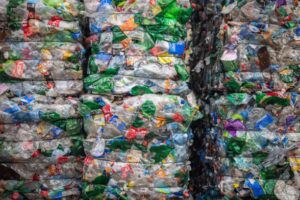Recycling water bottles offer several benefits for the environment and economy. These include energy savings, reducing landfill waste, and preventing pollution.
It also saves natural resources that take a long time to mine and extract. Recycled plastics also reduce carbon emissions, helping to combat global warming.
1. Saves Energy
Recycling conserves energy by reducing the need to extract raw materials from the Earth and convert them into usable products. It also saves energy by lowering the demand for new materials, preventing the overuse of natural resources.
Bottles that are not recycled end up in landfills, on roadways and in the ocean, all of which can significantly impact our environment. Moreover, plastic bottles often contain toxic chemicals that can be ingested by fish and other marine life, which can cause serious illness or death.
 Luckily, many plastics are easily recycled into new products, which reduces the need to use virgin materials in the first place. Using recycled plastic in manufacturing saves energy and conserves raw materials, making the overall process greener and more environmentally friendly.
Luckily, many plastics are easily recycled into new products, which reduces the need to use virgin materials in the first place. Using recycled plastic in manufacturing saves energy and conserves raw materials, making the overall process greener and more environmentally friendly.
Recycled plastic is used in various applications, including food packaging, carpet fibres, pillow stuffing and tote bags. The material is also easy to transport to a recycling centre.
For example, a ton of PET (polyethylene terephthalate) containers made with recycled plastic saves 7,200-kilowatt hours of electricity, the equivalent of taking more than 360,000 cars off the road. It also conserves natural resources and reduces greenhouse gas emissions.
Another way that plastic bottle recycling Adelaide saves energy is by minimizing the need to mine and refine virgin bauxite ore for aluminium. A ton of recycled aluminium can save 21,000 kilowatt hours of energy that would have been needed to mine and refine the ore from scratch.
Additionally, reducing the need to process virgin bauxite ore reduces petroleum and natural gas consumption and greenhouse gases. These fossil fuels are a nonrenewable resource we must conserve as we use existing supplies.
Fortunately, there are other ways to help increase the amount of recycled plastic. Some people believe that having more recycling bins in public places and minimum recycled content laws can make a difference.
However, the recycling industry is still struggling to keep up with the growth in plastic bottle usage. Currently, the United States uses about 2.5 million plastic bottles every hour; only 10 percent are recycled. This leaves 90 percent to go into landfills, the ocean and roads, where it can cause severe environmental damage.
2. Saves Money
Keeping your plastic water bottles out of landfill can help you save money in the long run. Not only can you avoid the cost of disposal fees, but you will also prevent your plastic bottles from ending up in the ocean or roadways.
The process of recycling plastic reduces the need to manufacture new materials, which in turn saves you money on energy costs. It also helps support the recycling industry, which is growing.
Most Americans use 2.5 million plastic bottles each hour, all needing to be recycled. It makes the entire plastic bottle industry a huge business and will only get bigger.
One ton of recycled plastic conserves 3.8 barrels of oil. It also saves energy because it requires less electricity than manufacturing virgin material.
Recycled bottles are often sold to a company that uses them as raw materials to produce new products like clothing, carpets and drinking water. It is called “downcycling.”
It’s a good thing that recycling is becoming more popular because it can be a real money-saver. But it’s still not enough.
For example, PepsiCo, the largest beverage company in the United States, purchases about half of all bottled-grade recycled PET. The rest is sent to smaller companies that can’t afford to stock up on rPET.
The company tries to recycle all its waste, but it’s often limited by supply.
It is important to know how your plastic bottles are recycled. The best way to ensure your bottles can be recycled is to keep the caps on rather than remove them before recycling. It ensures that the equipment at your local MRF (materials recovery facility) can easily identify your plastic and that they can properly sort it.
Using recyclables is also a great way to reduce landfill waste, as it requires less space. In addition, recycled bottles are biodegradable and can be composted in a few days. It means your plastic bottles will be a food source for plants and other animals when they decompose, benefiting our environment.
3. Reduces Landfill Waste
Bottle recycling has many benefits, including the fact that it can significantly reduce the amount of landfill waste we produce. It also helps protect our environment by keeping harmful pollutants out of the air and water.
For example, plastics that are not properly recycled may end up in the ocean or on roadways and pollute our environment. Moreover, they can harm our wildlife.
One of the best types of plastic that can be recycled repeatedly is polyethylene terephthalate or PET. Unlike other types of plastic, PET can be made into new bottles with no loss of quality or value.
Another type of plastic that can be recycled is glass. When brought to a processing facility, glass can be broken into clumps called cullet. The cullet is then cleaned and sorted. It is then combined with other raw materials, like soda ash and sand. Then, these raw materials are used to make new glass bottles and jars.
Besides helping reduce the amount of landfill waste we produce, bottle recycling can also save energy. It is because manufacturing plastic products from recycled materials takes a lot less energy than it does to make them out of virgin materials.
